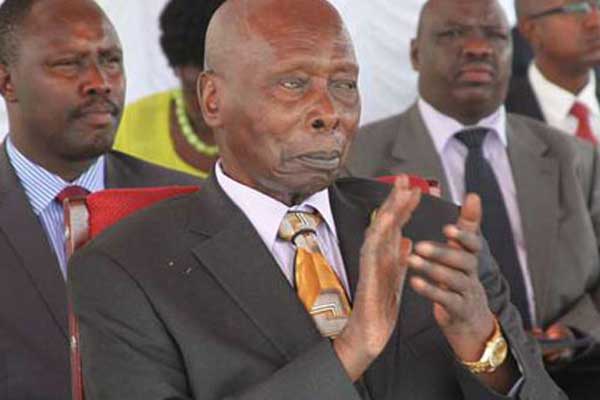Former President of Kenya, Daniel Toroitich Arap Moi, died on Tuesday 4, February 2020.
He succumbed to a long-term illness at Nairobi Hospital at 5:20 a.m according to a press statement from President Uhuru Kenyatta’s office.
The retired president governed the country as the second president for a period of over two decades, the longest term ever than any other president that came before or after him since independence.

In his 24- year rule, he was characterized with a love-hate relationship from world leaders, local leaders and citizens as well.
At some point in his governorship, the International Monetary Fund or World Bank froze aid to Kenya due to his stringent leadership skills.
Opera News has since established some set of tactics he used to ensure longevity in leadership and as the head of the Kenyan government.
They include;
Torture Chambers
Between 1986 to 1992, Nyayo House, now one of Nairobi’s busiest government buildings housing immigration department was used by President Moi to quell any kind of resistance to his leadership.
Under his leadership, thousands of political activists, academics, students, and artists were arrested and held in dark, water-logged cells for weeks on end with little food or drinking water.
The 26th floor of Nyayo House was the interrogation room, where prisoners were beaten until they confessed, often to fictional crimes.
For years, Kenyans whispered about the Nyayo House torture chambers, hidden in the basement of the 26-story building.
ODM Party leader, Raila Odinga, was among those held in Nyayo House in 1988 and 1990.
Harambees
Harambee, a Kenyan tradition of community self-help events, e.g fundraising or development activities was mainly used by President Moi during his era to enhance national cohesion.
Through harambees, Moi was able to promote the spirit of cooperation and understanding among various communities thus bringing people together and promoting unity.
In the video below, for instance, the former president had attended a harambee to develop basic needs such as education at Kabaa High School in Machakos.
One-Party State
In his tenure, President Moi ensured the country had no other political parties to ensure there would be no opposition when it came to matters development, politics or any other agenda that would be pushed by his government.
However, due to international pressure, he repealed the constitution in 1992 that saw the dawn of multi-partyism in Kenya since.
He followed in the footsteps of the first president of Kenya, Jomo Kenyatta who made Kenya become a de facto one-party state.
On October 25, 1969, President Jomo Kenyatta travelled to Kisumu to officially open the “Russian Hospital” (New Nyanza General Hospital), a pet project of his fierce rival, opposition leader Jaramogi Oginga Odinga.
The President and Kenya People’s Union leader exchanged harsh words, a scuffle broke out and as the hostile crowd advanced on the dais, presidential security personnel fired into the crowd, leaving more than 10 people dead as the visitors’ motorcade sped away.

Three days later, the KPU was banned and Kenya became a de facto one-party state.
Police Brutality
Moi’s administration was rampant with cases of police brutality to quell any form of resistance.
Politicians Kenneth Matiba, reverend Timothy Njoya and activist Wangari Maathai were among people who faced the wrath of been on the “wrong” side of the law as police brutality was bestowed on them by the Kenyan government then.
Regional Government
President Moi devolved power, in a move that was not systematic, into different regions of the country so that he could be able to assess and monitor from afar the country political movement.
His close allies revealed to Opera News that the Provincial Commissioners and District commissioners who headed the different regions acted as informants to the president on the people who showed insurgency or resilence to the government.
Hand- Outs
When President Daniel Moi took over upon Kenyatta’s death, he used Harambee to endear himself to the citizens as a generous man.
He personalised the exercise to the extent that he would hold fundraisers almost every week.
None of the guests at such functions would contribute more than ‘Nyayo’ even if they could afford to. Ministers and Kanu operatives who presided over fundraisers had to make donations on behalf of the president.
Moi flagging off Nyayo bus #RIPMoi #RIPPresidentMoi ^CM pic.twitter.com/tryc6YFGY7
— KBC Channel1 News (@KBCChannel1) February 4, 2020
Divide and Conquer
“You were only Moi’s trusted confidant when seated with him. The moment you stepped out, your worst adversary would be seated exactly where you were and undoing whatever it is you had discussed and agreed with the President.” A source intimated to Opera News.
The former president used the divide and conquer strategy especially when it came to Central region which was occupied mainly by the largest tribe in the country when it came to numbers.
When politicians like Kenneth Matiba fought for better positions in government, equality and development in the region, others in the region like J.J Kamotho would be used by Moi to counter what the former was advocating for.